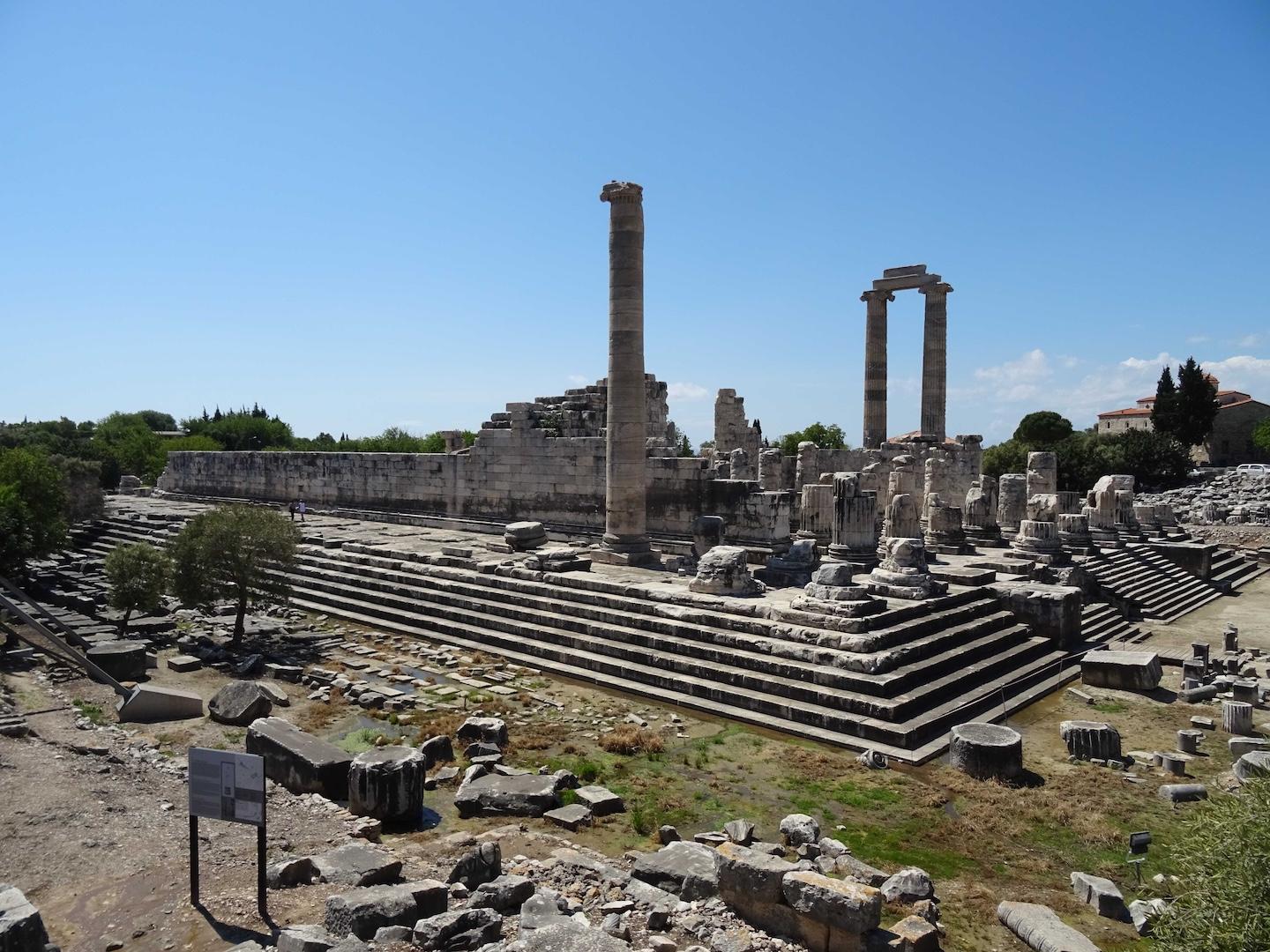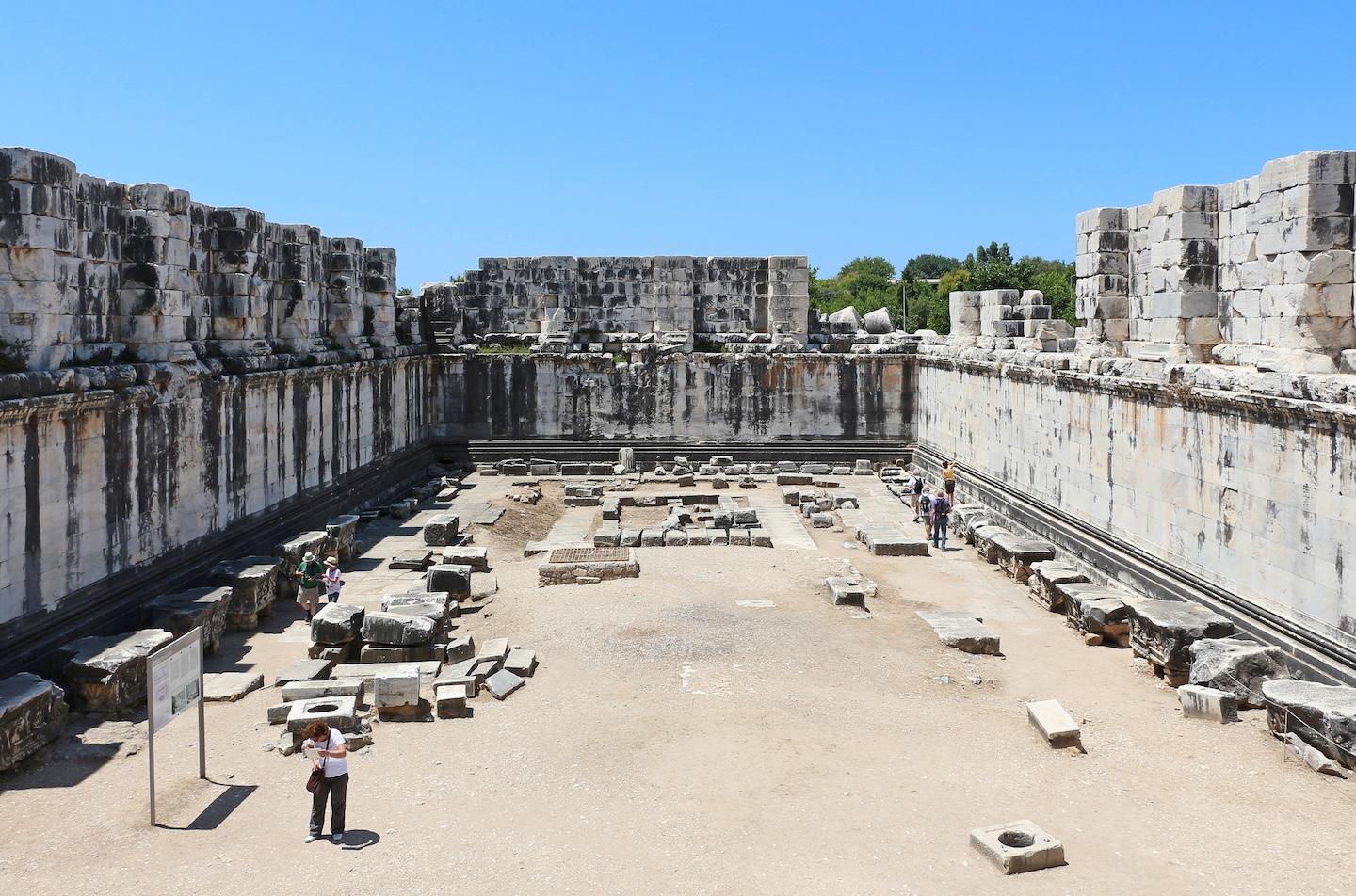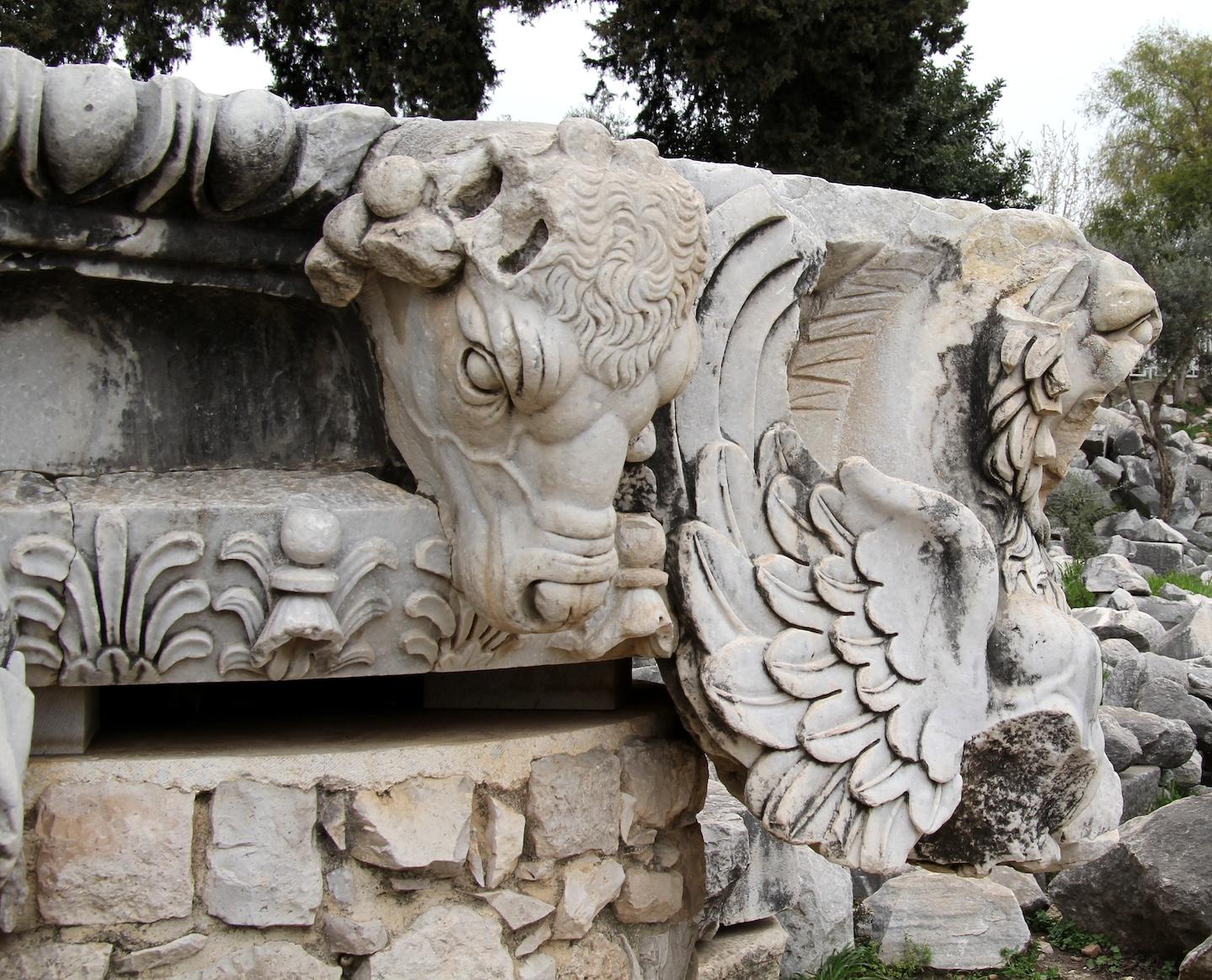Didyma
Sanctuary of Apollo’s Oracle
Didyma was home to the Temple of Apollo, one of the largest and most famous sanctuaries of the ancient world. Its oracle, second only to Delphi, attracted visitors from all over the Mediterranean for divine prophecies.

1.History
Didyma was an ancient Greek sanctuary located near the Ionian coast, within the domain of the city of Miletus. Today, its ruins are near Didim in Aydın Province, Turkey, a name derived from the ancient sanctuary. Didyma was home to two significant temples dedicated to Apollo and Artemis, the most prominent being the Temple of Apollo, one of the fourth largest temples in the ancient Greek world. Known as the Didymaion, this temple was famous for its oracle, which was second only to the Oracle of Delphi in importance. Throughout antiquity, the temple and its oracle played a central role in religious and political life, attracting notable figures like Alexander the Great and Emperor Diocletian, who sought the guidance of Apollo.
The temple complex was connected to Miletus by the Sacred Way, a 20 km road used for religious processions. This road, built in the 6th century BC, underscored the importance of Didyma in the cultural and religious activities of the time. Festivals, known as the Didymeia, were held annually in honor of the deity, and these gatherings strengthened the political and religious influence of Miletus and Didyma throughout the Mediterranean world.
In the political and religious landscape of ancient Miletus, the Temple of Apollo at Didyma was crucial. It housed an oracle, whose influence extended beyond religious practices into the city’s civic life. The high priest who presided over the sanctuary held a prestigious position, and several Roman emperors, including Trajan, Hadrian, and Julian, were elected to this post. The Medusa figure, prominently featured at the temple’s entrance, symbolized protection from evil and served as a guardian of the sanctuary.
The Temple of Apollo
The Temple of Apollo, built around 700 BC, evolved through different architectural phases over centuries. The main body of the temple was largely completed by 100 BC, though it was never fully finished. The temple’s Ionic columns, adorned with reliefs, reflect the grandeur of Hellenistic architecture, much like the Temple of Artemis in Ephesus. Despite its incomplete state, the temple was a major monument in its day, though today only a colossal, unfinished structure remains.

Excavations have also uncovered the foundations of the Temple of Artemis, located about 100 meters north of the Temple of Apollo. These discoveries have revealed the extent of Didyma’s religious significance, though much of the Temple of Artemis remains unexcavated. The alignment and orientation of the temple, however, suggest its strong ties to traditional Greek religious architecture.
Despite its current state of ruin, Didyma remains an archaeological and historical marvel, shedding light on the religious, cultural, and political complexities of ancient Ionia. The sanctuary’s significance to both Greek and Roman leaders and its prestigious oracular tradition solidify its place as one of the ancient world’s most important religious centers.
2.How to get there
Didyma is located near the town of Didim, in Aydın Province. You can reach the site by taking a local minibus or taxi from Didim center, which is about 5 kilometers away. For those driving, it is well-signposted and can be reached by following the “Apollon Tapınağı” signs from Didim’s center. The road is straightforward and the journey only takes about 10 minutes.
3.GALLERY





4.Explore Nearby Sites
You can also explore several nearby historical spots around Didyma. These close-by attractions offer further insight into the rich history of the region and are easily accessible for visitors wanting to extend their journey:
